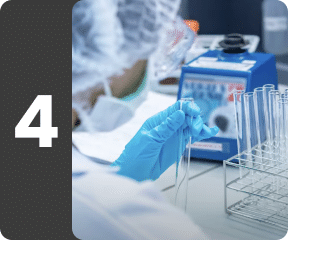Sickling Test
Understanding Sickling Test
What is Sickling Test?
The Sickling Test is a blood test used to identify both sickle cell disease and sickle cell trait caused by hemoglobin S (an abnormal form of hemoglobin). The test looks for changes in the morphology of the red blood cells (RBCs) by microscopy to detect sickle cell anemia and to find people who carry the sickle cell trait (gene).
Sickle cell disease is a genetic disorder that results in the production of abnormal hemoglobin (HbS), causing red blood cells to become rigid and adopt a crescent or sickle shape. These cells are less flexible and can obstruct blood flow, leading to recurring pain episodes, organ damage, and various serious health complications. The Sickling Test identifies the presence of these abnormal hemoglobin variants in the blood, which is crucial for diagnosing sickle cell disease and other related disorders like sickle cell trait (inherited blood disorder).
The Sickling Test is often recommended for individuals who experience unexplained pain, fatigue, or anemia symptoms. It is especially important for those with a family history of sickle cell disease or individuals from populations (such as African, Mediterranean, or Middle Eastern descent) with a higher risk of hemoglobinopathies. The test can also be used as part of newborn screening to identify sickle cell disease early, before symptoms appear. Detecting sickle cell disease early allows doctors to facilitate appropriate interventions and improve the quality of life for affected individuals. Additionally, the test plays a crucial role in identifying carriers of the sickle cell trait who may pass the disease on to their children.
No special preparation is typically required for the Sickling Test test. Inform the doctor about any medications or supplements being taken before undergoing this test, as a few of them may affect the test results, potentially requiring adjustments or temporary discontinuation before the test.
Test result ranges are approximate and may differ slightly between labs depending on the methodology and laboratory guidelines. Talk to the doctor about the specific test results. The results will help them evaluate the medical condition and formulate an overall treatment plan.
What is Sickling Test used for?
The Sickling Test is done:
- To diagnose sickle cell anemia.
- To identify whether a person carries the sickle cell trait.
- To investigate the causes of unexplained anemia or pain episodes.
- To screen newborns for sickle cell disease.
- As a part of pre-martial testing to screen for sickle cell disease in high-risk population.
- To monitor individuals with known sickle cell disease to evaluate the progression of the condition and manage treatment.
What does Sickling Test measure?
The Sickling Test detects the presence of abnormal hemoglobin (hemoglobin S) in red blood cells. It helps determine if a person has sickle cell disease or is a carrier of the sickle cell trait.
A positive test result confirms the presence of abnormal hemoglobin S in the blood, indicating the individual has sickle cell anemia. While a positive result for the sickle cell trait means the individual carries sickle cell gene but does not have the disease. They can pass the trait on to their children. A negative result indicates the absence of the sickle cell trait or disease, but it doesn't necessarily exclude all hemoglobinopathies, requiring further tests for a comprehensive diagnosis.
Determining whether a person has the sickle cell trait is essential for developing effective treatment and management plans. This may involve pain management, blood transfusions, and preventive measures to reduce the risk of complications associated with sickle cell disease.
Answers to Patient Concerns & Frequently Asked Questions (FAQs) about Sickling Test
Frequently Asked Questions about Sickling Test
Q. What is the Sickling Test?
Q. Why is the Sickling Test done?
Q. Who should get tested for sickle cell disease?
Q. How is the Sickling Test performed?
Q. What does a positive result mean in the Sickling Test?
Q. Is fasting required before the Sickling Test?
Q. What causes sickle cell disease?
Q. What are the symptoms of sickle cell disease?
Q. Is sickle cell disease curable?
Q. Can individuals with sickle cell disease have children?
Q. What is sickle cell trait?
Q. How does Tata 1mg ensure accurate lab test results?
Book a Sickling Test test at home near me





Other tests









